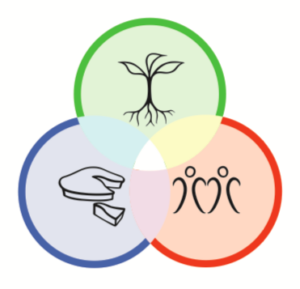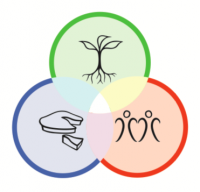Essence of Permaculture
Did you know we are continually adding new free resources to our catalog of offerings? Toolkits, epubs, organizers’ handbooks, and workshop guides are just a few examples, all located at the Free Resources category page.
Explore all the topics ranging from Cooperative Housing to Climate Change; from Transition Towns to Urban Neighborhoods.
 This month, we offer a brand new guide: Essence of Permaculture. From our friends at PermaculturePrinciples.com, this guide provides a summary of the permaculture concepts and principles as told by David Holmgren in his book “Permaculture Principles and Pathways Beyond Sustainability.”
This month, we offer a brand new guide: Essence of Permaculture. From our friends at PermaculturePrinciples.com, this guide provides a summary of the permaculture concepts and principles as told by David Holmgren in his book “Permaculture Principles and Pathways Beyond Sustainability.”
Essence of Permaculture contains an introduction to permaculture, thoughts about the future of the movement, and the values and use of the permaculture principles.
Available from us in 5 languages! English, Spanish, German, Hebrew & Russian.
An excerpt about impermanence:
“Permaculture is about the durability of natural living systems and human culture, but this durability paradoxically depends in large measure on flexibility and change. Many stories and traditions have the theme that within the greatest stability lie the seeds of change. science has shown us that the apparently solid and permanent is, at the cellular and atomic level, a seething mass of energy and change, similar to the descriptions in various spiritual traditions.
The butterfly, which is the transformation of a caterpillar, is a symbol for the idea of adaptive change that is uplifting rather than threatening.
While it is important to integrate this understanding of impermanence and continuous change into our daily consciousness, the apparent illusion of stability, permanence and sustainability is resolved by recognising the scale-dependent nature of change. In any particular system, the small-scale, fast, short-lived changes of the elements actually contribute to higher-order system stability. We live and design in a historical context of turnover and change in systems at multiple larger scales, and this generates a new illusion of endless change with no possibility of stability or sustainability. A contextual and systemic sense of the dynamic balance between stability and change contributes to design that is evolutionary rather than random.”
















